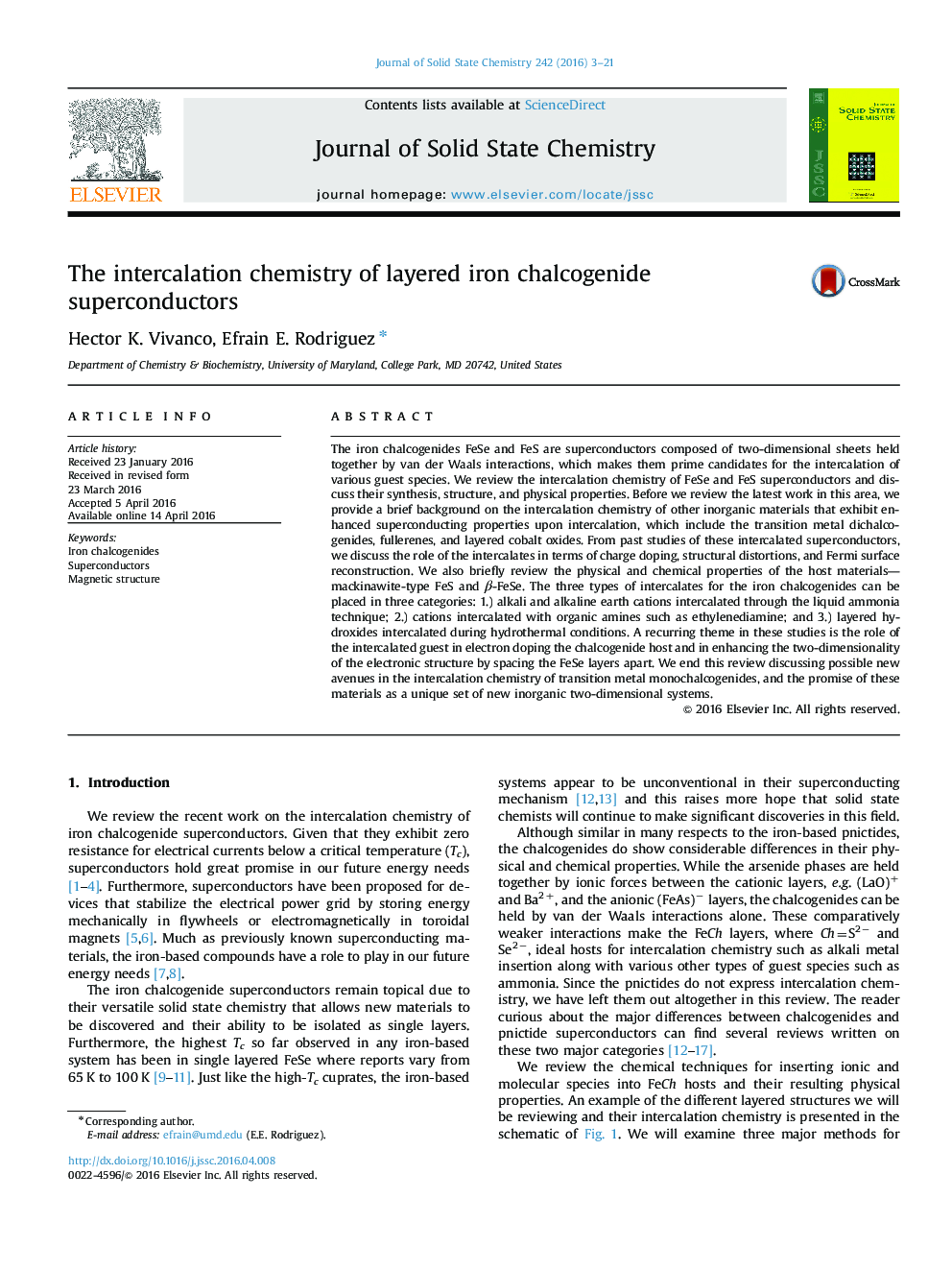| Article ID | Journal | Published Year | Pages | File Type |
|---|---|---|---|---|
| 1412107 | Journal of Solid State Chemistry | 2016 | 19 Pages |
The iron chalcogenides FeSe and FeS are superconductors composed of two-dimensional sheets held together by van der Waals interactions, which makes them prime candidates for the intercalation of various guest species. We review the intercalation chemistry of FeSe and FeS superconductors and discuss their synthesis, structure, and physical properties. Before we review the latest work in this area, we provide a brief background on the intercalation chemistry of other inorganic materials that exhibit enhanced superconducting properties upon intercalation, which include the transition metal dichalcogenides, fullerenes, and layered cobalt oxides. From past studies of these intercalated superconductors, we discuss the role of the intercalates in terms of charge doping, structural distortions, and Fermi surface reconstruction. We also briefly review the physical and chemical properties of the host materials—mackinawite-type FeS and β-FeSe. The three types of intercalates for the iron chalcogenides can be placed in three categories: 1.) alkali and alkaline earth cations intercalated through the liquid ammonia technique; 2.) cations intercalated with organic amines such as ethylenediamine; and 3.) layered hydroxides intercalated during hydrothermal conditions. A recurring theme in these studies is the role of the intercalated guest in electron doping the chalcogenide host and in enhancing the two-dimensionality of the electronic structure by spacing the FeSe layers apart. We end this review discussing possible new avenues in the intercalation chemistry of transition metal monochalcogenides, and the promise of these materials as a unique set of new inorganic two-dimensional systems.
Graphical abstractFigure optionsDownload full-size imageDownload as PowerPoint slide
